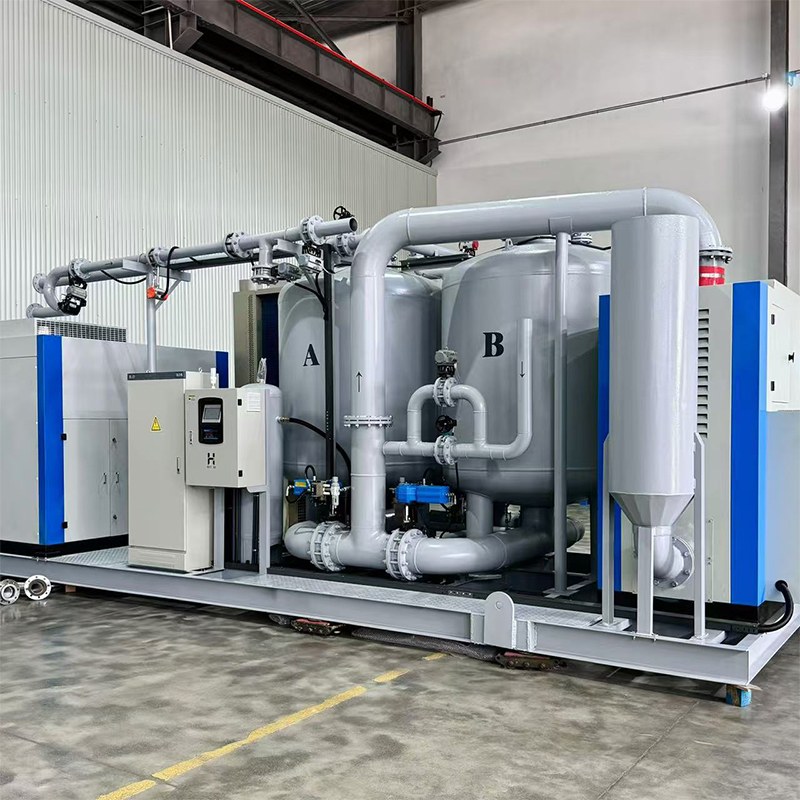-
WhatsApp / Mob : +86 156 5177 2521
-
o email : mrwin@cnbangwin.com
WhatsApp / Mob : +86 156 5177 2521
o email : mrwin@cnbangwin.com
VPSA Oxygen Plant for Aquaculture: Enhance Growth and Efficiency
Sep 22 , 20251. Introduction
2. Why Aquaculture Needs On-Site Oxygen
3. What Is a VPSA Oxygen Plant
4. Product Description & Working Principle
5. Smart Features for Fish Farming
6. Technical Details
7. Innovative Advantages
8. Environmental & Economic Benefits
9. Real-World Case Study
10. Applications
11. FAQs
Fish and shrimp farms have come to rely on a stable level of dissolved oxygen to maintain high growth rates and healthy animals. A [VPSA oxygen plant] can provide a continuous supply of high-purity oxygen directly to the aquaculture ponds to keep oxygen levels high and let the fish grow stronger, faster with lower mortality.
* Oxygen levels below 5 mg/L in water stress fish, slowing their metabolism.
* Transported and stored liquid oxygen cylinders are expensive, unreliable.
* On-site oxygen generation ensures 24/7 reliable oxygen, even during peak biomass growth or unusually hot weather.
A VPSA (vacuum pressure swing adsorption) oxygen plant separates the nitrogen from ambient air to provide 90–95% pure oxygen that is ideal for use in [aquaculture oxygenation] .
* Twin adsorption columns filled with molecular sieve material
* Blower, vacuum pump, and PLC controller
* Automatic column switching to provide continuous output
* Ambient air flows through the molecular sieves, which adsorb nitrogen and release it into the atmosphere to produce clean oxygen for injection into the aquaculture pond
* IoT Monitoring: Track dissolved-oxygen levels remotely and receive instant alerts when thresholds are crossed
* AI Control: Automatically modulates oxygen flow based on fish biomass, temperature, time of day
* Energy Optimization: Smart load management to reduce power consumption
l Purity: 90–95%
l Flow Rate: 5–500 Nm³/h
l Pressure: 0.1–0.5 MPa
l Power: 3–50 kW
* Can reduce the feed conversion ratio (FCR) by as much as 15%
* Less disease risk from consistently optimal water quality
* Works with [recirculating aquaculture systems (RAS)] for closed-loop farming
* 30% lower operating cost compared to delivered liquid oxygen cylinders
* Recyclable components to ensure a low-carbon footprint
* Allows for less chemical treatment and a more sustainable operation
A tilapia farm in Peru purchased a 100 Nm³/h [VPSA oxygen generator] to save on feed costs and boost growth rate. Within six months, they were able to improve growth rate by 20% and reduce mortality by 25%.
* Intensive fish aquaculture (salmon, tilapia, catfish, etc.)
* Shrimp hatcheries, nursery ponds
* [RAS aquaculture] facilities
* Emergency supply during algal blooms or other oxygen depleting events
A: Every 3–5 years, depending on air quality.
A: Yes, it is designed for continuous use in aquaculture operations with minimal maintenance.
